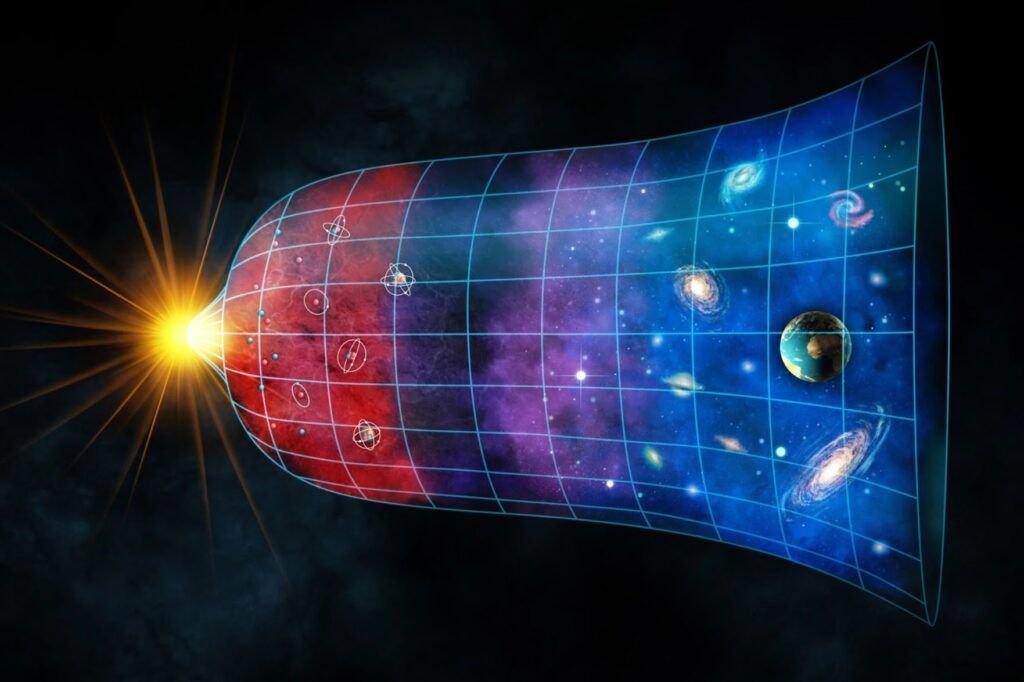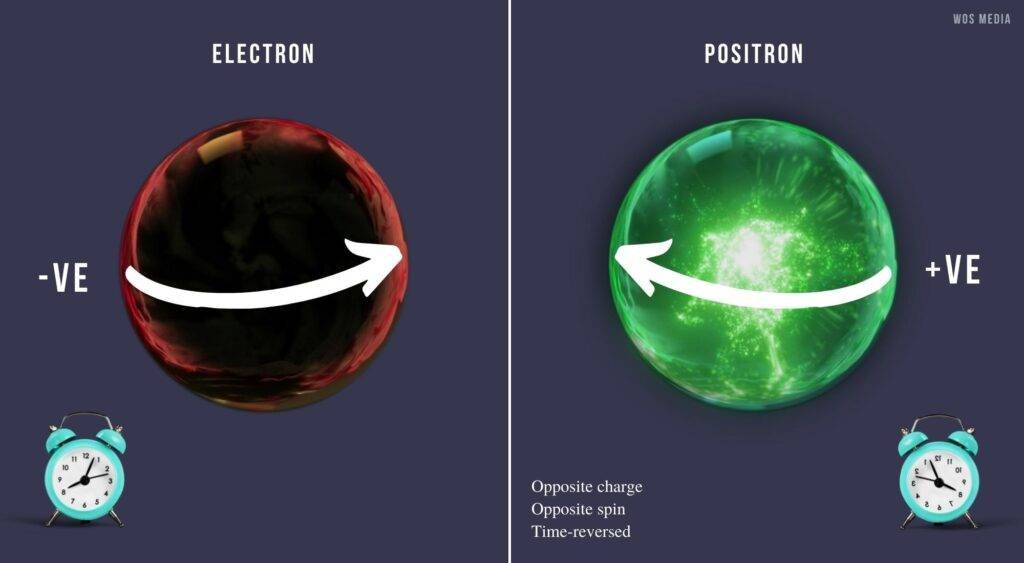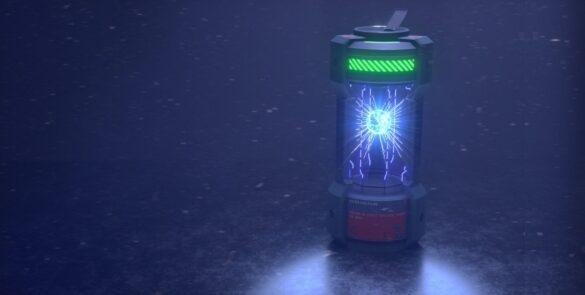Why Is There More Matter Than Antimatter? Matter Antimatter Asymmetry
- Team WOS
- 7 Mins Read
WOS is supported by its audience. When you purchase through links on our site, we may earn an affiliate commission “from advertisers”, while you don’t need to pay in addition.
Why did only matter get the upper hand on antimatter and not vice-versa? Watch this video for a better understanding.
Yin & Yang
The Universe is a composite of two extremities. Lao Tzu, an ancient Chinese philosopher called it yin and yang. Newton said every action has an equal and opposite reaction. The two opposite forces always remain in equilibrium and when this equilibrium breaks down, creation happens.
According to the Big Bang theory of origin, the Universe was formed from a stage of nothingness since there was no time available before the Big Bang for any known matter to exist. For the energy of the Universe to always remain the same without violating the law of conservation of energy, the Big Bang nucleosynthesis must have created equal numbers of matter and antimatter.
Antimatter is a negative counterpart of matter, having the same mass but opposite charges and when they meet, annihilation happens. We have made a detailed video on Antimatter. Check it out here. Energy is released in the form of photons, gamma radiation, and neutrinos. If that was the case, then the Universe must be filled with only radiation and no matter must have existed.
But as you can see, matter does certainly exist and thus there must have been some internal phenomenon that causes the abundance of matter over antimatter. What was that phenomenon? And why did only matter get the upper hand on antimatter and not vice-versa?
Early Hours Of The Big Bang
There was a very minute imbalance condition in the very early hours of the big bang that caused matter to win the race over antimatter. Mathematically, this discrepancy was 1 extra matter for every 1 billion matter-antimatter created. This process is called baryogenesis and it is the most accepted solution for explaining the asymmetry present in the Universe. But what exactly caused this extra matter to appear?

It took 380,000 years for electrons to be trapped in orbits around nuclei, forming the first atoms.
From Noether’s theorem, we know that for every symmetry in the physical laws there must be a conservation law that is associated with it. Whenever this symmetry breaks down, the energy levels of the system change, and an extra field or particle appears during the symmetry breaking phenomenon.
In the case of particles like baryons such as protons, neutrons, and leptons such as electrons, neutrinos, the conservation laws present are called Baryon number and lepton number. Baryon Number can mathematically be expressed as 1/3rd of the difference of the number of quark and antiquark. For example, a proton has 3 quarks and no antiquark, thus it has a baryon number of 1. This baryon number and lepton number must be conserved for each particle for the symmetry to be preserved. But what are these symmetries?
Fundamental Symmetries in Physical System
There are three fundamental symmetries applicable among the physical systems and they are C (Charge) symmetry, P (Parity) symmetry, and T (Time) symmetry. Any physical system consisting of a particular particle, must show the same results when that particle is replaced with its opposite charge counterpart and its chirality, that is the mirror image is reversed, and the system is run along the inverted direction of time.

CPT is observed to be a good symmetry in meson (quark-antiquark), baryon (proton-antiproton), and lepton (electron-positron) systems.
For example, a system containing an electron will show similar results to a system with a positron (the antimatter counterpart of the electron) and having a spin in the opposite direction, and time-reversed. This combined C, P, T symmetry is applied throughout classical mechanics.
But when we come to quantum field theory, the symmetry seems to break down. In 1957, physicists Tsung-Dao Lee and Chen Yang observed the violation of C and P symmetry separately during the weak force interaction among the particles. But when C and P symmetry were applied together, there was no violation.
CP Violation
In 1964, again two physicists James Cronin and Val Fitch observed the combined CP violation during the decay of a particle called kaon. A kaon can decay into its antiparticle known as antikaon by transforming “down quark” into “down antiquark” while antikaon can similarly decay into kaon by transforming “down antiquark” into “down quark”.
In quantum mechanics, we deal only with the probabilities of the events occurring, and thus we can find the probability of two decays happening simultaneously. For the CP symmetry to be preserved, both processes must have equal probabilities but what Cronin and Fitch observed was that both probabilities differ in their values. This is called a CP violation.
If the probability of antikaon transforming into kaon is more than that of kaon transforming into antikaon, then there must be an abundance of kaon over the antikaon. This case is not only applicable to kaon particles but after the 2000s, two more particles such as B-meson and D-meson have been observed to show CP violation. These cases of symmetry breaking can be used to explain the asymmetry present in the quantity of matter and antimatter.
Leptogenesis
One more phenomenon is used together with baryogenesis to explain the baryonic asymmetry. This hypothetical phenomenon is called leptogenesis. Neutrinos come in a variety of ranges of masses. Depending upon their chirality, there are left-handed neutrinos and right-handed neutrinos.

Leptogenesis is a class of processes by which the cosmic baryon asymmetry originates from an initial lepton asymmetry generated in the decays of heavy sterile neutrinos in the early Universe.
According to this hypothesis, during the early hours of the Universe, there was the presence of mostly heavier versions of the neutrinos, and these neutrinos more often decayed into antileptons than into leptons. These antileptons can go through a quantum tunneling process and reach a stage of higher energy.
This higher energy state represents the transformation of antileptons into baryons. Thus along with baryogenesis, a second phenomenon leptogenesis causes the decay of leptons or antileptons into baryons and thereby increasing the number of positive matter present inside the Universe.
These two are not the only theories or hypotheses present to explain the so-called asymmetry and there is much more to it. It is one of the most complex problems in modern physics yet remains to be solved but maybe the Universe is secretly telling us to be positive.
What are your thoughts about the matter-antimatter asymmetry in our Universe? Let us know in the comments.
Share this article
Team WOS
Share this article
Neil deGrasse TysonThe Universe is under no obligation to make sense to you.
Latest posts
We have learned many partial truths and some remain with us even when we are studying higher courses. Let’s look up such partial truths that are very common...
How do the animals and birds view the world around them? Do they perceive everything just like a human? Let's understand the basic anatomy of the eyes of...
What will the conditions be for the human body in space? How much difference a human being would feel while being in space? Space is scary and lonely, and conditions are...
Here is a list of the best science books that'll take you deep into the ocean of science. Books fueled the mighty revolutions in human history and produced...
World's most renowned scientists think that the cosmos has quantum consciousness. First of all, what exactly is consciousness? Scientists are actively engaged experimental tests of these ideas. One approach is to study brain-impaired patients to see if their information...
Trending Articles
World's most renowned scientists think that the cosmos has quantum consciousness. First of all, what exactly is consciousness? Scientists are actively engaged experimental tests of these ideas. One approach is to study brain-impaired patients to see if their information...
How do the animals and birds view the world around them? Do they perceive everything just like a human? Let's understand the basic anatomy of the eyes of...
Blockchains can be understood simply as a transparent distributed ledger system. A ledger is a book or collection of accounts in which transactions...
Can we produce Antimatter? Well, Anti-matter is often produced naturally in space. During the radioactive decay of heavier isotopes, positrons are produced in large amounts. Breaking down neutrons into protons and electrons also produces...
We have learned many partial truths and some remain with us even when we are studying higher courses. Let’s look up such partial truths that are very common...
The animal kingdom has evolved from unicellular organisms to gigantic dinosaurs and intelligent social animals, like us, Human beings! Throughout this evolutionary history, different species have left some characteristics or gained something new depending upon











